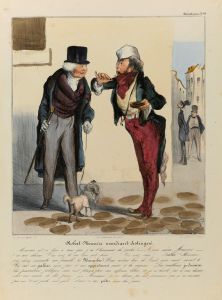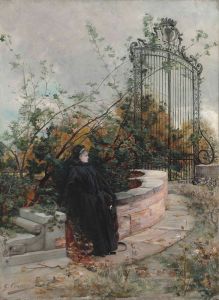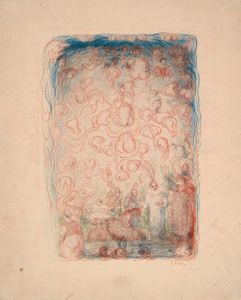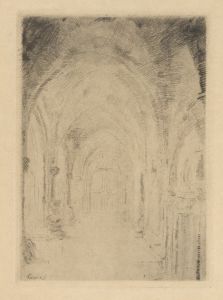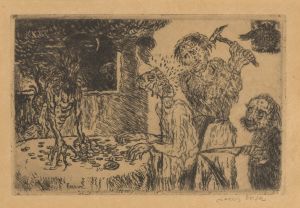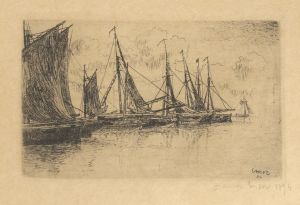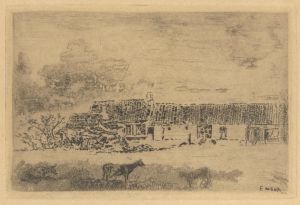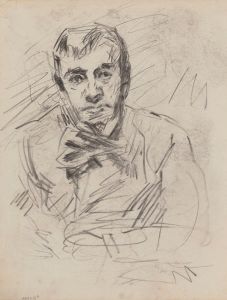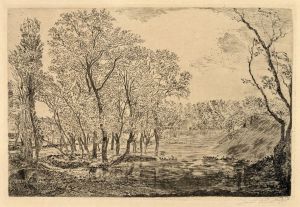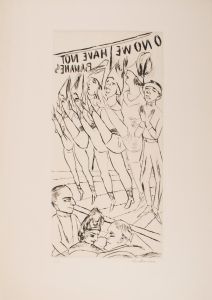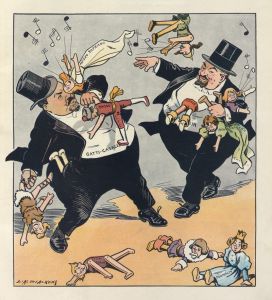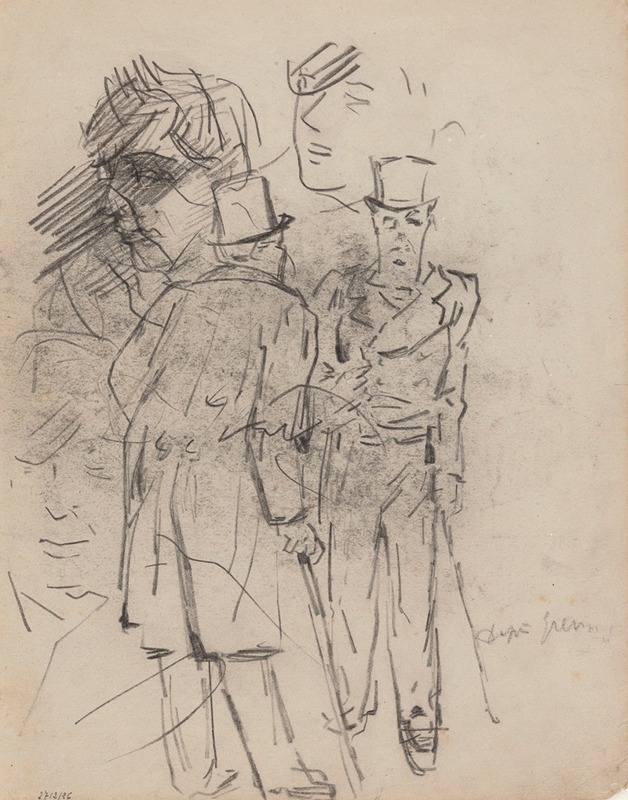
Copy after Grévin
A hand-painted replica of James Ensor’s masterpiece Copy after Grévin, meticulously crafted by professional artists to capture the true essence of the original. Each piece is created with museum-quality canvas and rare mineral pigments, carefully painted by experienced artists with delicate brushstrokes and rich, layered colors to perfectly recreate the texture of the original artwork. Unlike machine-printed reproductions, this hand-painted version brings the painting to life, infused with the artist’s emotions and skill in every stroke. Whether for personal collection or home decoration, it instantly elevates the artistic atmosphere of any space.
"Copy after Grévin" is a painting by the Belgian artist James Ensor, created in 1880. Ensor, born in 1860 in Ostend, Belgium, is renowned for his innovative and often avant-garde approach to art, which played a significant role in the development of Expressionism and Surrealism. His works frequently explore themes of satire, grotesque imagery, and the macabre, reflecting his fascination with the absurdities of human existence.
The painting "Copy after Grévin" is an early work by Ensor, produced during a period when he was still honing his artistic skills and exploring various influences. The title suggests that the work is a copy or study after an original piece by Alfred Grévin, a French artist and caricaturist known for his satirical illustrations and involvement in the creation of the Musée Grévin, a wax museum in Paris. Grévin's work often depicted scenes from contemporary life with a humorous or critical edge, which may have resonated with Ensor's own developing style.
Ensor's decision to create a copy after Grévin indicates his engagement with the artistic trends and popular culture of his time. During the late 19th century, it was common for artists to study and replicate the works of others as a means of learning and mastering different techniques. This practice allowed artists like Ensor to experiment with composition, color, and form while also paying homage to the artists they admired.
While specific details about the content and style of "Copy after Grévin" are limited, it is likely that the painting reflects Ensor's early interest in capturing the essence of human expression and societal critique. Ensor's later works are characterized by their vibrant colors, dynamic compositions, and a unique blend of realism and fantasy, elements that may have been in nascent form in this early piece.
James Ensor's broader body of work is celebrated for its bold use of color and innovative subject matter, often featuring masks, skeletons, and carnival scenes. These motifs serve as metaphors for the masks people wear in society and the underlying truths of human nature. Ensor's ability to blend humor with darker themes has cemented his place as a pivotal figure in modern art.
"Copy after Grévin" represents a formative stage in Ensor's artistic journey, offering insight into the influences and practices that shaped his later, more renowned works. Ensor continued to develop his distinctive style throughout his career, ultimately leaving a lasting impact on the art world with masterpieces such as "The Entry of Christ into Brussels in 1889" and "Skeletons Fighting Over a Hanged Man."
In summary, "Copy after Grévin" is an important piece in understanding the early development of James Ensor's artistic vision and his engagement with the cultural and artistic milieu of his time.





